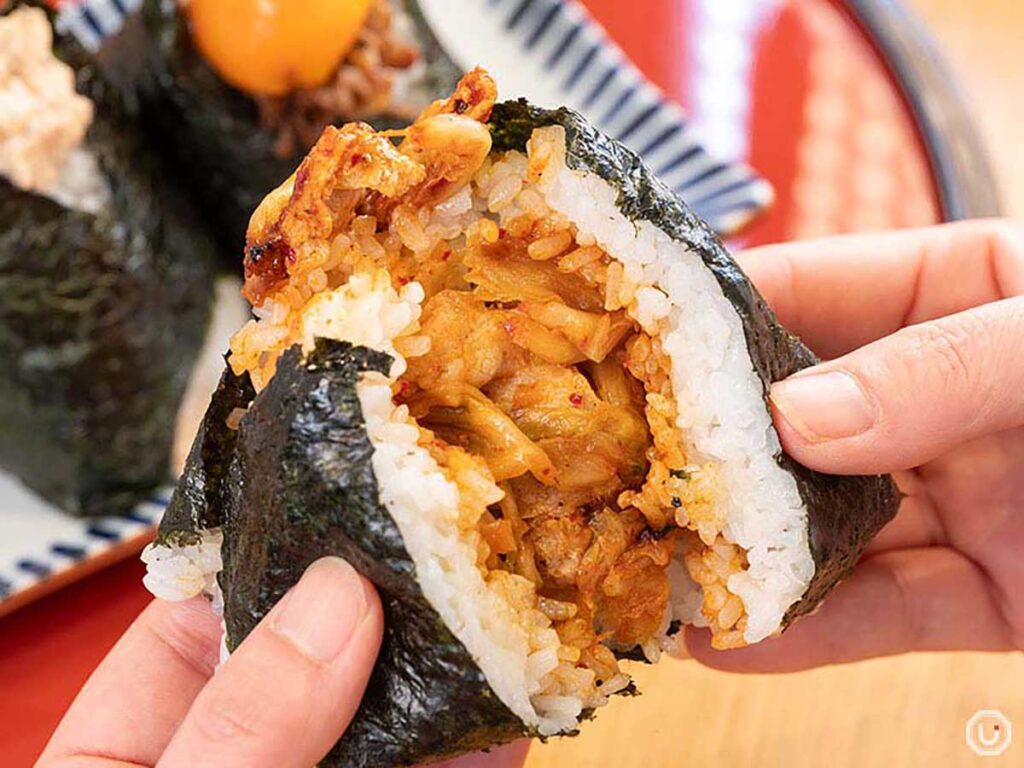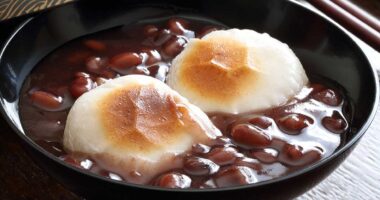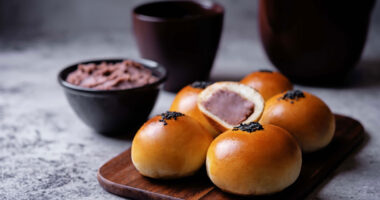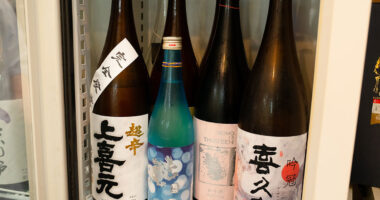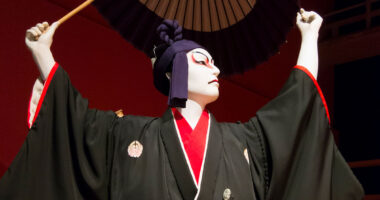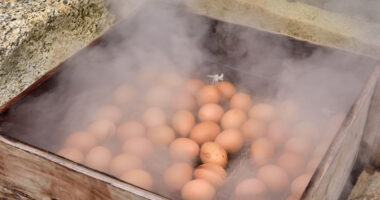Onigiri (rice balls) are a traditional Japanese rice dish made by shaping warm white rice by hand, tucking a filling like umeboshi (salt-pickled plum), salmon, or kombu (kelp) into the center, and wrapping with nori (seaweed).
Widely regarded as a portable food that began in the Yayoi period roughly 2,000 years ago, onigiri remain essential to daily life in Japan today. From convenience stores to specialty shops, they’re everywhere—and they’ve become a popular, approachable way for first-time visitors to experience Japanese food culture. This guide covers what onigiri are, their history, how to make them, classic fillings and variations, and Tokyo specialty shops worth a visit.
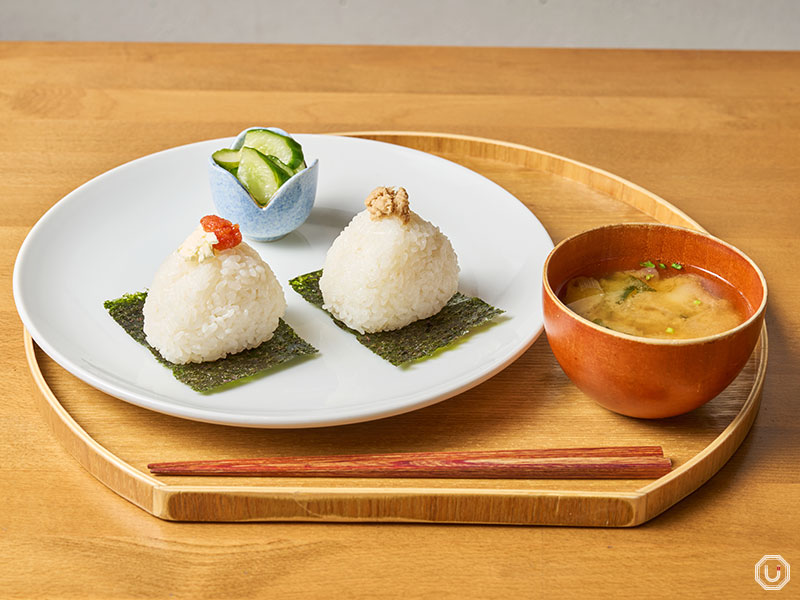
“Onigily Cafe” serving their Onigiri Breakfast Set (with Miso Soup)
Definition and history of onigiri
Onigiri are hand-shaped balls (or triangles) of white rice with a filling sealed inside. This basic definition has been stable across centuries and still describes what most people eat today.
Origins and archaeological discoveries
Many sources trace onigiri back to the Yayoi period (about 300 BC to 300 AD); this view is supported by archaeological finds of carbonized rice lumps shaped like rice balls at ancient sites. Finds from multiple regions suggest people were already shaping rice for portable eating, indicating the prototype of modern onigiri existed in antiquity.
From the Heian to Edo periods
By the Heian era (794-1185), onigiri appear in texts as nigiri-meshi (“hand-pressed rice”). At that time they were simply salted rather than wrapped in nori. In the Edo period (1603-1868), as seaweed cultivation advanced, the now-familiar pairing of onigiri and nori took hold. That nori pairing improved both the taste and freshness preservation and helped establish the basic form that continues today.
A traditional rice dish with cultural weight
Beyond being a portable meal, onigiri reflect everyday Japanese life and values. They’re a staple of home cooking and often symbolize the care and affection of home-made food.
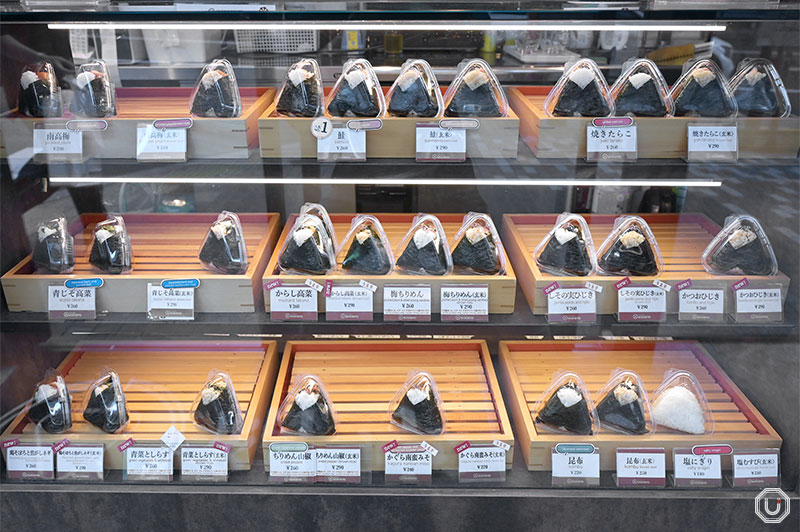
Display case at “Musubitei Shibuya” offering about 30 kinds of onigiri
Shapes and how to make them
Onigiri come in many shapes and styles that vary by region and personal taste. Master a simple method and you can make excellent onigiri at home.
Common shapes
Classic shapes include triangles, barrel-shapes, and rounds—each with its own advantages.
The triangular form is most common, easy to hold, and easy to bite. Barrel-shapes are popular in Kansai and make it easy to pack in more filling. Rounds are the simplest to form and great for kids.
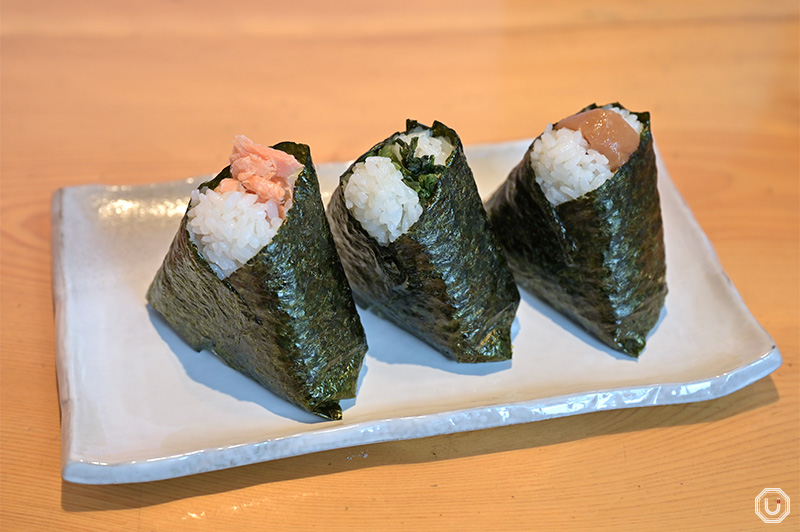
Onigiri at “Musubitei Shibuya”: from left, “salmon,” “aojiso takana,” and “pickled plum”
Basic instructions
Making onigiri requires four steps:
First, place the filling in the center of freshly cooked warm rice. Moisten your hands with lightly salted water, then gently form the rice around the filling without squeezing hard. Shape into your chosen form, then wrap with nori (partially or fully) to finish.
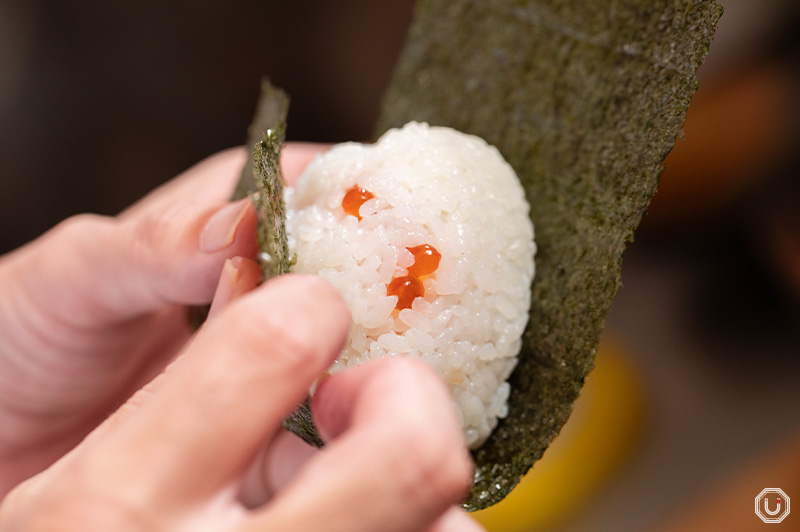
The chef at “ONIGIRI ASAKUSA YADOROKU” finishing an onigiri with nori
Tips for great texture
Use just-cooked warm rice, season with a modest amount of salt, and shape with a light touch—firm enough to hold together, never so tight that the grains crush.
If your rice has cooled, add a splash of water to restore moisture and rewarm it. Salt lightly—just enough that the grains have a faint savor. Over-squeezing ruins the texture; think “set the shape,” not “pack it solid.”
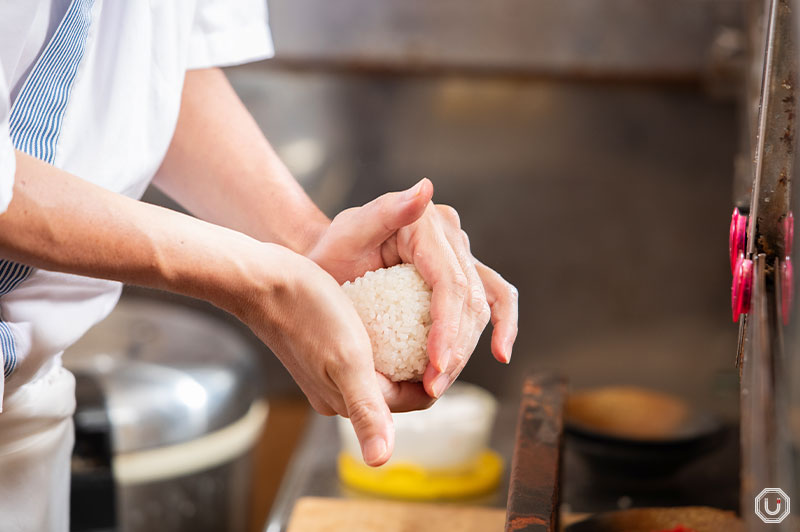
A chef at “ONIGIRI ASAKUSA YADOROKU” shaping an onigiri by hand
Fillings and variations
Part of the charm is the astonishing range of fillings—from time-honored classics to modern twists.
Classic fillings and what they taste like
Popular fillings include umeboshi, salmon, kombu, tarako (salted pollock roe), and katsuobushi (dried bonito flakes). Ume onigiri is the most traditional; its tart, salty punch pairs beautifully with rice.
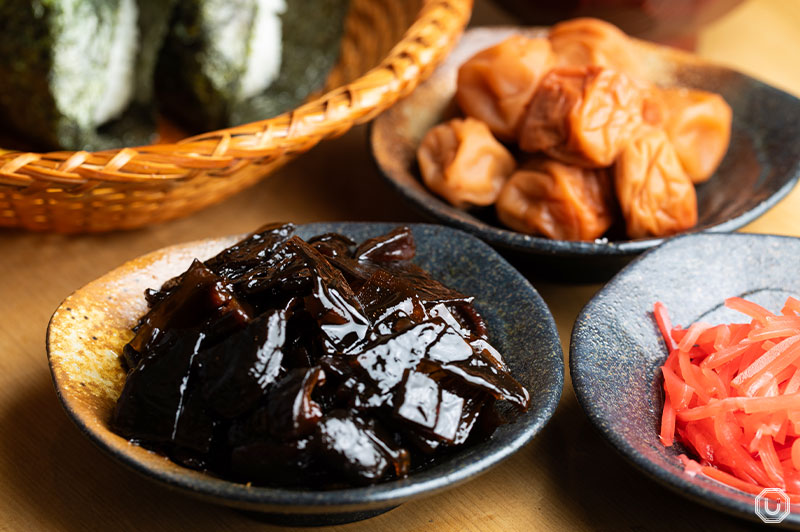
“Kombu,” one of the fillings at “ONIGIRI ASAKUSA YADOROKU”
Salmon onigiri is beloved by all ages. Salted kombu distributes umami through the rice for an elegant finish. Tarako onigiri features salted pollock roe with a popping texture, while mentaiko (pollock roe flavored with seasonings spiced with chili pepper) onigiri adds a stimulating kick of flavor. Mentaiko is especially popular in Kyūshū.
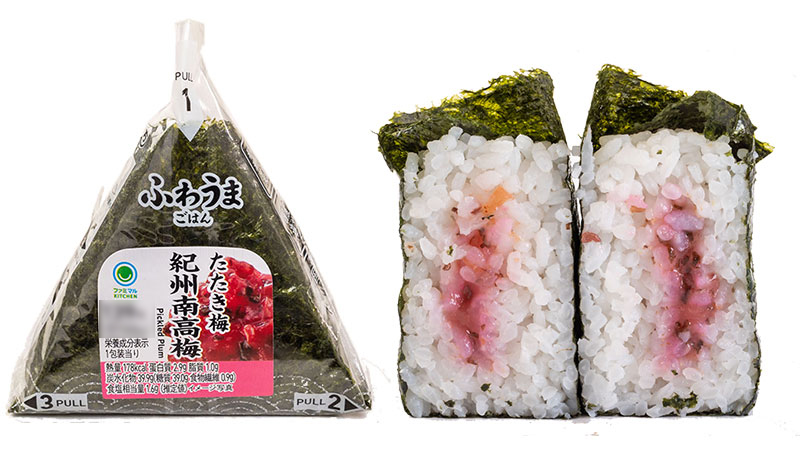
From FamilyMart: “Pickled Plum”
By cooking method
Onigiri also vary by how they’re finished.
Yaki-onigiri (grilled rice balls) are brushed with soy or miso and grilled for a toasty aroma. Age-onigiri (deep-fried rice balls) are crisp outside and fluffy inside—served plain or in soup. A recent favorite, onigirazu (a “no-squeeze” wrapped rice sandwich), layers fillings inside a flat sheet of rice and nori.
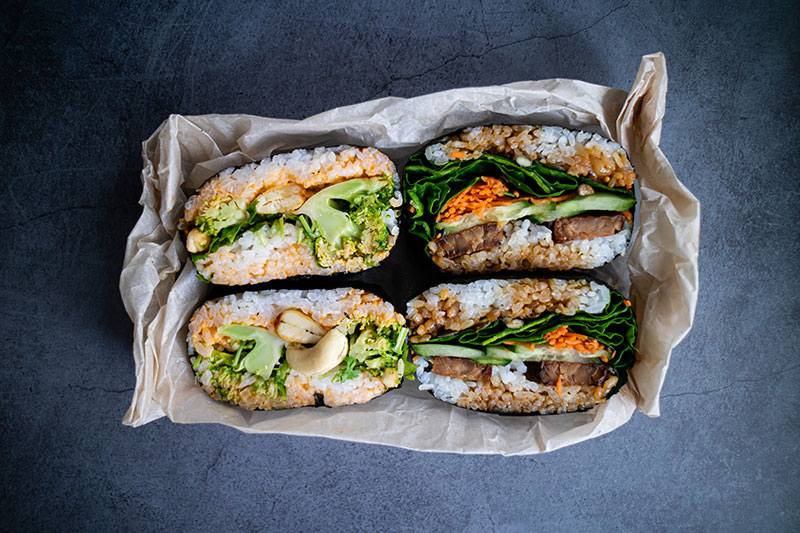
“Onigirazu” (photo for illustrative purposes)
Local specialties across Japan
Across Japan you’ll find regionally inspired onigiri that showcase local ingredients—and hunting for them is half the fun.
Aichi’s tenmusu (shrimp-tempura rice ball) is widely enjoyed today as “Nagoya-meshi” (local Nagoya cuisine) but it originated in Tsu, Mie Prefecture, and later spread to Nagoya. Okayama’s ebi-meshi (local “shrimp rice”) is a dark, savory fried-rice specialty made with caramel sauce, ketchup, curry spices, and more; some shops offer onigiri using this flavor. Miyazaki’s Chicken Nanban onigiri adapts the prefecture’s beloved dish (fried chicken flavored with a sweet and sour sauce and often served with tartar sauce) into a grab-and-go form, and meat-wrapped onigiri are a noted Kyushu treat.
Cultural value and how to experience onigiri
Onigiri express more than flavor—they capture rhythms of daily life and regional identity, making them a meaningful cultural experience for travelers.
An experience for all five senses
At onigiri specialty shop counters you can watch chefs shape onigiri to order, with seasonal garnishes providing visual appeal. Tasting lets you compare rice varieties, fillings, and nori quality; grilled or fried versions show how cooking method shifts aroma and texture. Choosing from dozens of fillings at a specialty shop is a delight in itself—the process of finding a favorite becomes part of the cultural experience.

“Egg Yolk & Ground Meat” onigiri at “Togoshi-ya”
From history to the present day
Onigiri also have historical value as a forerunner of ekiben (train station boxed lunches), tying into the growth of Japan’s rail culture.
Today they’re an evolved portable food—perfect for breakfast, takeout, or snacks. Traditional shops convey heritage, while regional fillings turn tasting into memory-making on trips.
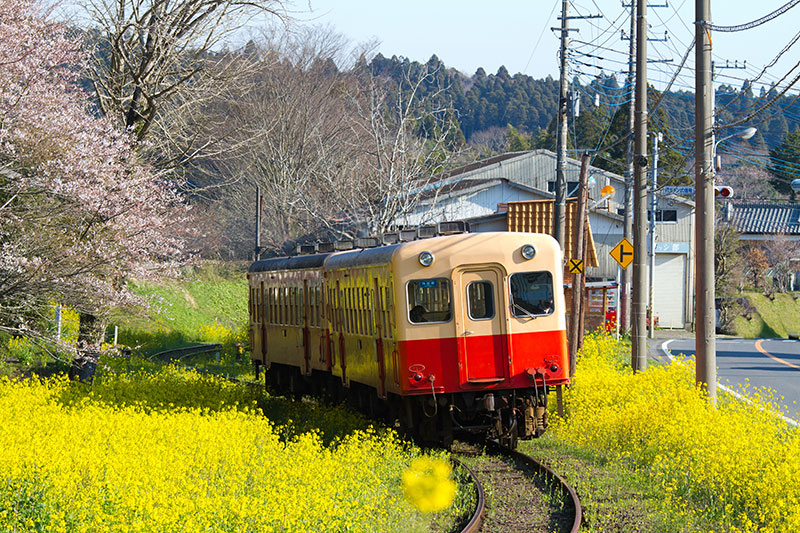
Japan’s railways (photo for illustrative purposes)
Specialty shops vs. convenience stores
Specialty shop onigiri typically feature freshly-cooked rice, the gentle warmth of hand-crafting, and high-grade nori—yielding a markedly different experience from convenience-store versions.
Expect variety too: creative East-meets-West fillings, premium rice, and diverse techniques. Many shops also focus on natural ingredients and balanced seasonings. Convenience-store onigiri shine for portability and shelf-life thanks to clever packaging—great when you’re on the go.

From FamilyMart: “Tuna Mayonnaise”
Summary
Onigiri are a time-honored Japanese rice dish with roots reaching back two millennia and a living presence in modern life.
Simple in structure—shaped rice, a central filling, and nori—onigiri nonetheless reveal depth and diversity, from classic ume and salmon to local specialties and creative new styles. For visitors, they’re an approachable, hands-on way to experience Japanese food culture. Watch masters at specialty shops, pick from wide-ranging fillings, and through each bite, you’ll discover how this everyday staple reflects Japan’s way of life.
